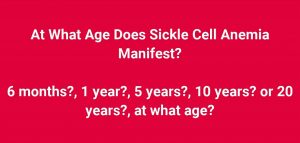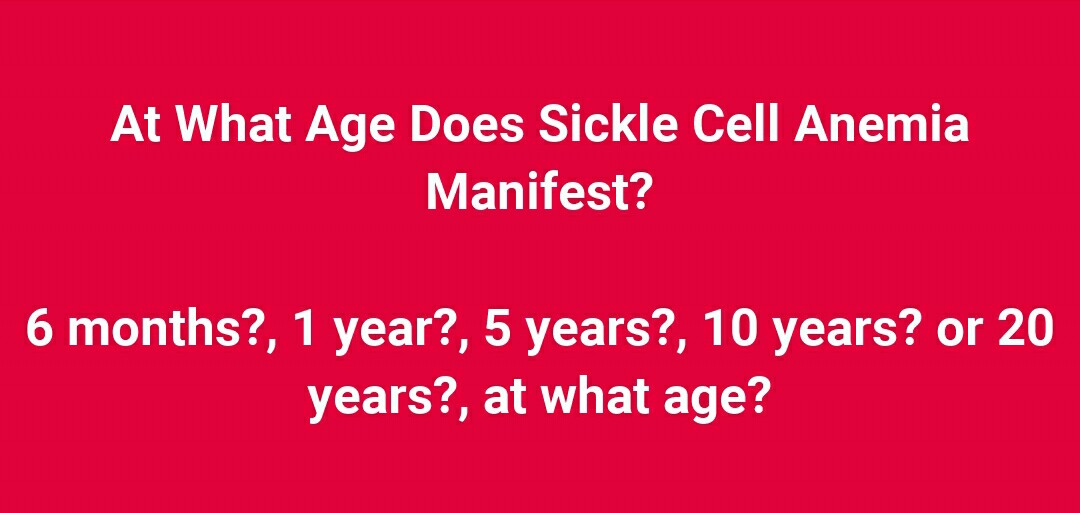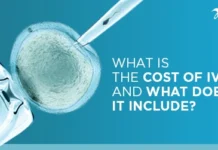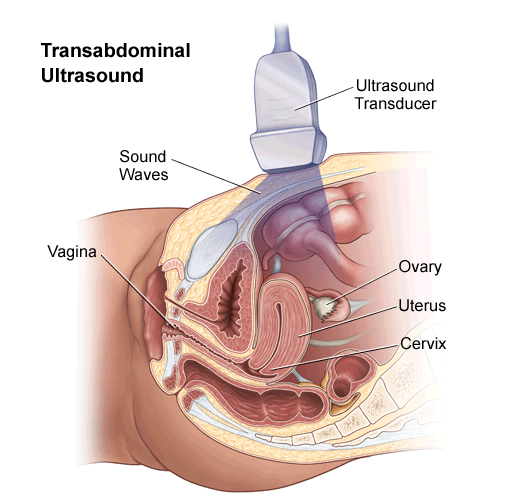AT WHAT AGE DOES SICKLE CELL MANIFEST? AT WHAT AGE IS SICKLE CELL ANEMIA DETECTED? AT WHAT AGE IS SICKLE CELL ANEMIA DIAGNOSED?, AT WHAT AGE IS SICKLE CELL DISEASED DETECTED?
INTRODUCTION
In times past – and sadly, in modern times in some parts of the world, especially in Africa – children and young adults are believed to be bedeviled by a “mysterious and agonizing” disease. Thanks to Science, this myth has been largely conquered.
Sickle cell disorders (HbSS and its variants) comprise a group of genetic disorders resulting from the presence of a mutated form of haemoglobin, designated as “Haemoglobin S”. Unlike sickle cell traits (‘carrier state’) wherein the sickle cell gene – however present – is but of considerable concern mainly when choosing a reproductive partner, the Sickle Cell Disorders (SCDs) manifest with varying degrees of symptoms and signs.
CLINCAL FEATURES
The frequency of crises, severity of anemia, degree of involvement of organs/systems as well as incidence of death associated with SCDs vary from person to person and is multifactorial. The clinical presentation can include:
➡️Pain: acute and chronic pain from vaso-occlusive crisis, long bone pain from bone marrow infarction, hand and foot syndrome, acute chest syndrome (associated with infection), avascular necrosis of head of femur
➡️Anemia
➡️Splenic sequestration with splenic enlargement
➡️Recurrent infection
➡️Organs/Systems involvement: gastrointestinal tract, integumentary system (e.g. ulcers), cardiac involvement, genitourinary system (e.g. priapism), central nervous system (e.g. a stroke), pulmonary system, ophthalmologic involvement etc
AT WHAT AGE DOES SYMPTOMS OF SICKLE CELL ANEMIA OCCUR?
As started earlier, the age of manifestation defers from person to person. I have seen persons develop symptoms for the first time at teen, some above 20 years and of course most at early childhood.

At birth, the red blood cells of neonate largely (about 65% to 90%) comprise Fetal Haemoglobin (HbF) and because of the excellence affinity to oxygen in this type of haemoglobin, symptoms are seldom present in neonates (less than a month old). However, HbF is largely replaced by the adult haemoglobin as the baby grows older (at an average of reduction by 5% per week), and at the fifth to sixth month of life, has significantly reduced (to less than 10% the original amount), hence sickle cell manifestation usually occur after the fifth month of life.
In a few cases, the sickling might be masked due to several other genetic mutations, for example the presence of HbS in a setting of persistent HbF (designated as HbS/HPFH) wherein protection is provided by the HbF, and symptoms may only occur should the HbF decline significantly or when there are significant stressors.
PREVENTION OF CRISIS
Prevention is multimodal, and includes avoiding/preventing stressors, proper personal care and proper medical care.
MANAGEMENT OF SICKLE CELL DISEASES
This includes managing the clinical features highlighted above and may comprise non-pharmacological, pharmacological, surgical and radiological approaches which are beyond the scope of this write up.
CONCLUSION
With better understanding of the nature of the disorders, the myths surrounding them have been unraveled and prognosis has considerably improved – although differentially – across the world, While, it is advisable to prevent the disease through informed counsel when choosing reproductive partners, it is of note to state that should any of the symptoms above occur in a person (especially above 5 months of age), necessary medical checks should be instituted and it would not be time to blame the gods or some spirits, as you might as well be dealing with SCD.
DR. OKPALAUGO NNABUEZE PETER MB.BS
REFERENCE:
























